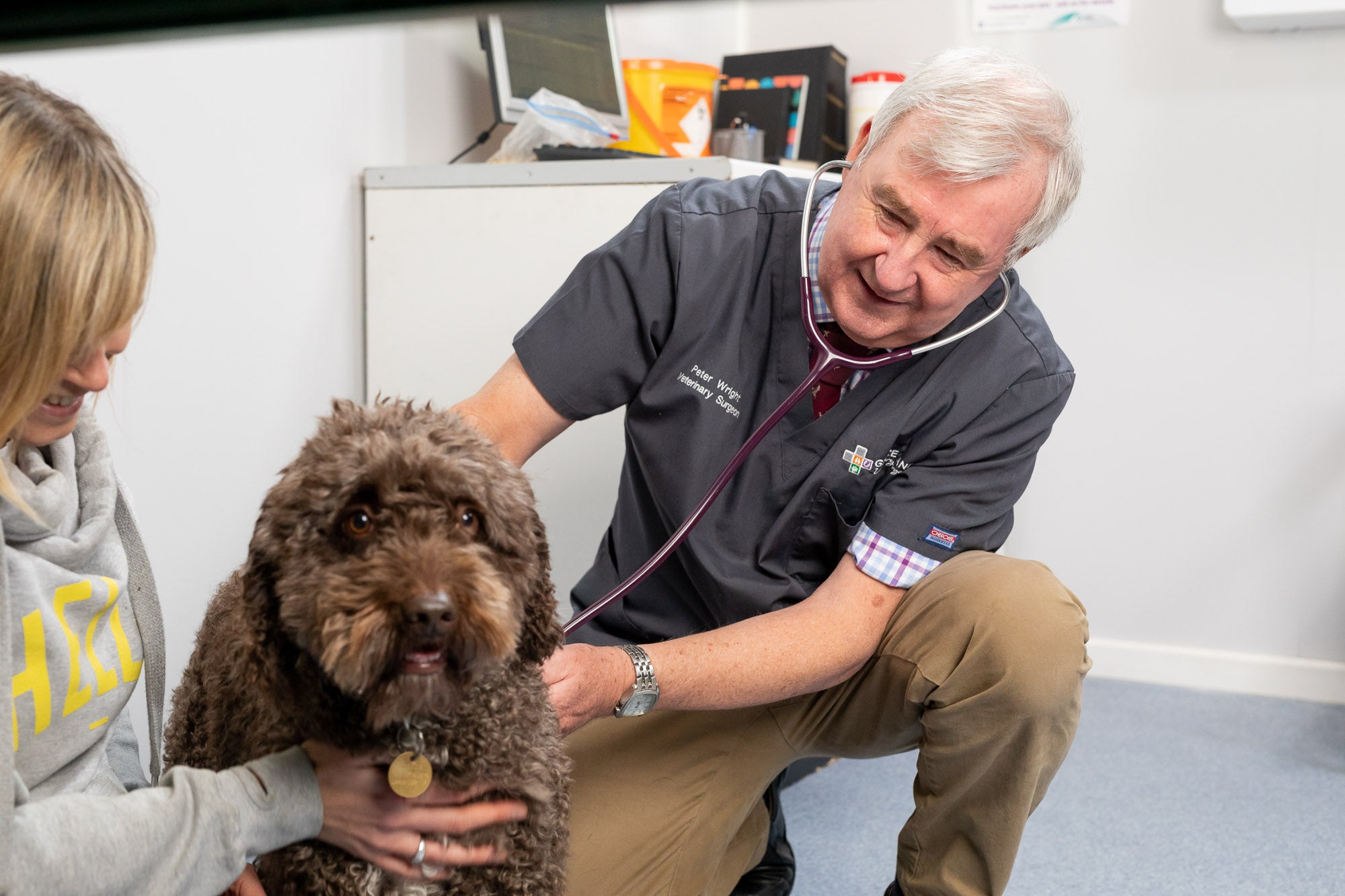In this instalment of our Ask the Vet series, Yorkshire Vet star Peter Wright – the co-creator of our vet recommended dog food range, Harringtons Advanced Science Diet – will explain how mites can affect our furry friends. The infection is searched for more than 12,000 times every month and can be a nuisance for all dogs and cats if contracted.
In this blog, our vet will explain two common types of mites: ear mites, and sarcoptic mange, how to spot them and the different methods of treatment.
Ear mites
What are ear mites?
The ear mite is a small, creamy white, barely visible mite that lives almost exclusively in the ear canal of both dogs and cats. They are highly contagious and are contracted from direct contact with an infested animal.
Ear mites have a life cycle of approximately three weeks. The adult female mites lay eggs in the ear canal, creating a cycle as the eggs develop into larvae and immature mites and then back into adults again.
What are the symptoms of ear mites?
Dogs and cats of any age can suffer from ear mite infestations, but they are particularly seen in young puppies and kittens.
A few typical symptoms may alert pet owners that their furry friend has ear mites. Firstly, they regularly shake their heads quite vigorously, secondly you may see your pet scratching around their ears. Lastly, a dark red crusty wax may be seen in your pet's upper ear canal which often appears reddened.
How are ear mites treated?
When it comes to ear mites, there are several licenced medications your vet may prescribe to treat infestations. All of them will only kill adult mites in the ear, meaning it is vital that you continue with the medication as it may take up to three weeks to kill all the mites and eliminate the infestation as mite eggs and immature mites would be unaffected by the initial application. These treatments are in the form of ear drops. Alternatively, there are several 'spot on’ treatments available which are applied to the skin at the base of the neck.
Sarcoptic mange
What is sarcoptic mange?
Sarcoptic mange in dogs is an infestation caused by a small spider-like mite called Sarcoptes scabiei var canis which burrows beneath the surface of the skin and lays eggs. These eggs hatch in a few days and become larvae, which then move about under the skin as they develop into adults.
Sarcoptic mange is very infectious among dogs, especially young dogs, and is mainly contracted from direct contact with an infected dog, may also be passed on by sharing a bed with an affected dog or, less commonly, by contact with an infected fox.
What are Sarcoptic mange symptoms?
Sarcoptic mites in dogs causes intense itching and inflammation, so the first signs to look out for is if your dog is scratching or nibbling relentlessly at their skin. This will lead to the next signs of open sores and hair loss due to scratching.
Pay close attention to your dog’s joint regions as these mites target areas of greater activity but will soon spread from skin around joints to the belly and flanks. The skin becomes red and inflamed, with skin crusting and hair loss occurring but as with many skin problems, the appearance of Sarcoptic mange in dogs can be variable.
How is mange treated?
Before treatment, a diagnosis is needed to confirm the presence of these microscopic mites, but this can be difficult. Microscopic examination of skin scrapings may fail to detect the mites due to them living below the skin surface. Blood tests are also available to confirm the condition, but again, these tests are not always 100% reliable.
Many cases are treated based on symptoms alone, particularly in young dogs, which are more susceptible.
Treatment of sarcoptic mange is relatively straightforward with modern medication and elimination of mites can be achieved within a month. A short course of steroids may be required to cut down the inflammation and itchiness, and antibiotics may be needed to control secondary skin infections.
Other dogs can catch sarcoptic mange from your dog, so keep your dog away from others until the infestation is cleared. Any other dogs within the household should also be treated for canine scabies, even if they show no symptoms.
Sarcoptic mites can live on humans but only for a short period of time so any irritation caused by them is short lived.
We’ve worked with Peter Wright to ensure your pet gets the best inside and out. Together we’ve crafted the Harringtons Advanced Science Diet to ensure your dog gets the best foods for their internal health. Peter’s advice gives you the knowledge you need to help you combat your pet’s illnesses, like Cushing’s disease or pancreatitis.

